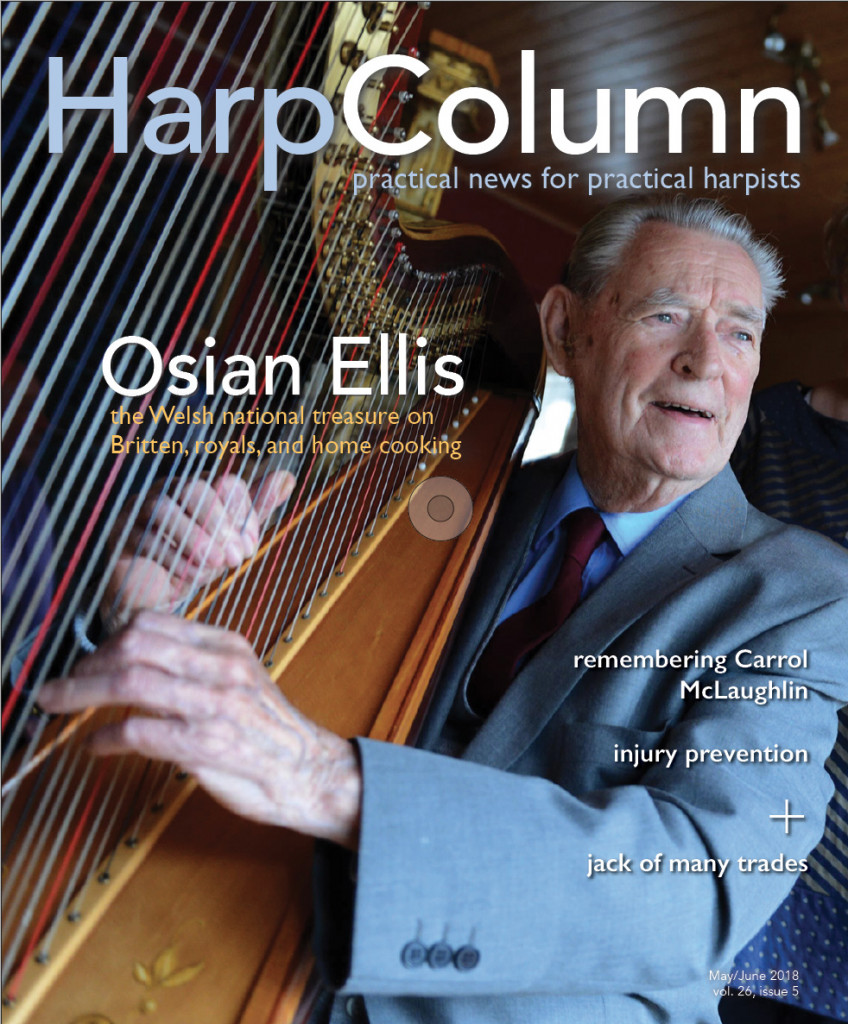
Most harpists have probably had an occasion to play the Bach-Gounod “Ave Maria.” It is frequently used for weddings, Catholic masses, and funerals. However, it usually requires two instruments or harp and voice. A melody instrument or voice takes the melody—a meditation written by Charles Gounod. This is superimposed over the harp (or other accompaniment) playing the Prelude No. 1 in C major, BMV 846 by J.S. Bach.
Only the melody is Gounod’s. The accompaniment is obviously Bach’s. The idea to use the “Ave Maria” as the text was not Gounod’s, but Aurélie Jousset’s, the mother-in-law of a beautiful singer who was a student of Gounod.
It’s very tricky to try to play this as a solo on harp. Evidently, Karl Oberthür did a transcription for solo harp many years ago, and Anna Pasetti has reintroduced and edited the piece through Magadis Harp Music. It is published by UtOrpheus.
There are two verses. In the first verse, a harmonic is used in measure seven in the left hand to sound an octave higher as the melody while the right hand is occupied. In the second verse, harmonics are used more frequently to sound as the melody until the right hand takes over once again. You can play them both or choose the version that works best for you.
All pedal changes are marked in the center of the staff. Occasional fingering is included. There are five pages in all, typeset on cream-colored, oversized pages. It is a practical arrangement for the intermediate to advanced player who wants to be able to play this as a solo.
Another piece that can be useful for a wedding is “How Does a Moment Last Forever” by Alan Menken. This beautiful ballad was written for the 2017 live action Disney film, Beauty and the Beast, not the earlier animated version. One size truly does fit all with Sylvia Woods’ lovely publication that works for pedal harp or a lever harp tuned to either C major or E-flat.
This is a fairly simple arrangement in G major, but embellishment is easy if desired as all chord symbols appear above the staff. Pedal changes are below the staff. Both diamond-shaped notes and wording (e.g. mid C#) indicate lever changes. There are 18 lever changes, but they are not difficult and they are the same two levers (middle C and D) repeatedly.
Fingering is suggested throughout and page turns were well-planned. It is six pages in length and the typesetting is easy to read. The arrangement is available as a download. This very accessible arrangement will add a pretty ballad to your repertoire fairly quickly.
Pedal harpists looking for something a little different and fun will find an enjoyable challenge in A Scott Joplin Collection. Lyon & Healy has published this assortment of six Scott Joplin melodies arranged by Erin Freund, available as a PDF download.
The first selection is a waltz called “The Augustan Club.” It is four pages and features grace notes, finger slides, short sections of scales, and a minor section.
“Elite Syncopations” is in 2/4 and has a lot of fast pedal changes, but they are clearly marked and very doable. It starts out in F and there is a key change to B-flat major. There are some quick, effective muffles. The tempo is marked as “not fast,” and that is true of much of this ragtime music—it has an easy gait, but is not particularly fast.
“Maple Leaf Rag” is five pages of fast pedal moves. It starts out in A-flat, modulates to D-flat, and then returns to A-flat for the finale that ends with a muffle. It is marked as a march tempo, but it is in 2/4 and does move at a pretty good clip.
A much slower option is “Solace (A Mexican Serenade)” in very slow march time. There are some grace notes, muffles, and fourth finger slides. This melody was used in the 1973 hit movie, The Sting, but the most familiar part of this tune doesn’t begin until the fourth page of this arrangement.
“Swipesy-Cake Walk” is a little faster and requires some muffling technique in the left hand. There are some scales of octaves in the left hand that need to be played cleanly. It starts and ends in B-flat but has a section in E-flat in the middle. The final selection is the well-known “The Entertainer” which was also used in The Sting. The tempo marking on this is also “not fast” so take it easy.
All these pieces have several repeats, so you’ll get a lot of mileage out of each one. This music is suitable for the intermediate or advanced player. You need to be good at an oom-pah bass and willing to move a lot of pedals. Some page turns are a little tricky. These may take a little practice, but Dr. Freund has done all the hard work for you. All of these arrangements can be heard on Freund’s website, erinfreund.com, if you want a preview before downloading the music. They are fun to play as well as crowd-pleasers. Try them! •







